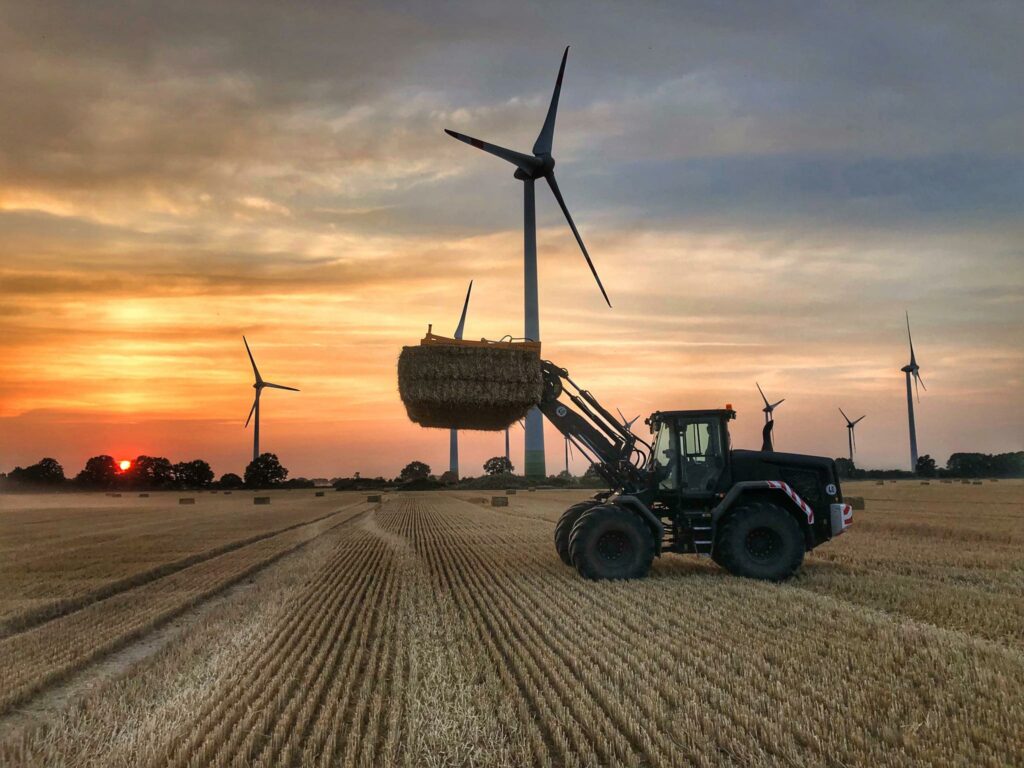The baling season is here! Whether you make straw, silage or hay bales, round or rectangular, small or big: it’s going to be another exciting year. What about the weather, bale density and storage? We have prepared a checklist of important things you should keep in mind to ensure a smooth and safe ride this baling season.

Keep in mind bale moisture levels
Excessive moisture in hay can be a real danger, resulting in fires or bales developing mould. When hay’s internal temperature exceeds 55 degrees Celcius, it can spontaneously combust. This can be equally dangerous whether stacked in a barn in square bales or in rows. Usually, heating occurs in hay above 15% moisture, so it’s important to cut and bale when grasses are dry. A digital moisture meter can help you stay mindful of the moisture of hay and straw bales. Obviously, checking the weather forecast will also give you a good indication of when to cut and bale.
Monitor bale density
A well-known method to ensure bale density is optimised is to simply get off the tractor and check it. Moving too fast to save time can result in mistakes and tweaks not being fixed or set while running. The quality of the hay depends on the density of the bale. The better the quality, the more it sells for. And, from a safety perspective, loose hay is more likely to heat and combust. In addition to keeping an eye on the baler’s density gauge, get out and kick the bales from time to time, with a general rule being that you shouldn’t be able to stick your fingers into it.

Keep hay and straw clean
Always keep the cleanliness of the hay and straw bales in mind. Keeping your hay and straw clean will lower ash percentages, improving quality and making straw bales easier to digest. Make sure the hay or straw pickup flotation is correctly set, so the pickup follows the contour of the ground and the tines aren’t digging into the dirt.
Store bales properly
You can store your bales either indoors or outdoors. The preferable way to store hay and straw bales is in the shed to be safe during bad weather conditions. If you keep bales indoors, make sure that the roof doesn’t leak and that there is good ventilation. Cover the ground of your indoor storage space by using a tarp or leave a layer of residual hay.
There are many ways to stack bales, but it’s essential to stack them in an organised way. One of the options is stacking bales in a criss-cross manner, with one layer in one direction and the next layer in the other direction, and not packed too tightly to allow some air gap between bales. Remember to keep the hay and straw away from trucks, machinery, heat sources, and fire accelerants such as gasoline. If stacking outside, find an open, well-drained and sunny area. If you have round bales, don’t stack them on top of each other because the water just runs down one onto the other. Simply stack them in rows and leave 45 to 90 cm between them for sunlight and airflow.
Move bales efficiently during baling season
For transportation on the land and around the farm, a bale grab and/or bale collector can come in handy. Meijer Holland Jumbo bale grab is perfect for transporting and stacking round and rectangular wrapped bales on the field. Fred bale grab is ideal for stacking and moving big bales of hay and straw, and if you have small bales, the Meijer KM bale grab can help move your bales and stack them on a truck or the field. Bale grabs will not only make transportation of bales easier and safer but also more efficient, allowing you to work faster and increase your workload.
Stay safe this baling season
Staying safe during the busy harvest season can be easily overlooked; however, preventing injuries and keeping everyone safe is an integral part of every season. Ensure all equipment has been properly serviced, perform routine maintenance, conduct daily checks, and include blowing out hay and straw chaff to prevent fire hazards. Plan your stacking site, prepare the surface if needed, and check that there are no overhead electrical lines that bale grabs can reach. Finally, don’t forget to protect yourself; wear sunscreen, sunglasses, sturdy shoes and gloves. Also, ensure you have plenty of water and food for the day. Staying hydrated and taking breaks during a long day can prevent serious injuries.
And last but not least: enjoy the baling season!
Also read: what is the optimal length of small straw and hay bales?







